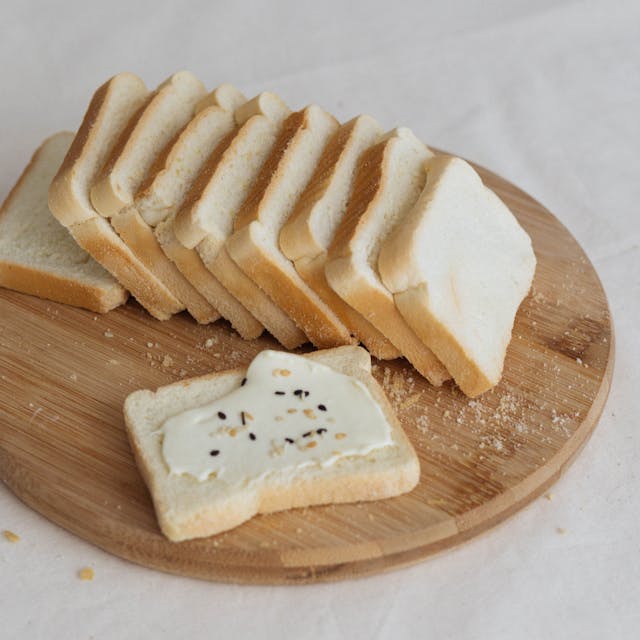
Why do things go stale? Things go stale because they either lose water or they gain water, making them difficult to eat.
If you leave food out on your kitchen counter, it very quickly starts to go stale. Foods that are soft tend to get hard, and foods that are hard tend to get soft. If you leave bread out, it becomes hard and brittle. If you leave potato chips out, they become soft and pliable. This process starts right after the foods are made, but it can be held off by keeping them in airtight packaging or by adding chemicals to them. The reason why hard and soft foods change is all down to the moisture content of the air.
Bread is soft because when the yeast eats the sugars, it produces carbon dioxide that makes bubbles in the dough. Cooking the bread sets these bubbles. To do this, the yeast requires water, which is why it is one of the ingredients of bread. The salt and the sugar dissolve in the water, becoming food for the yeast. The water is also vital to make the structure of the bread. Flour has a type of protein called gluten. When water is added, the gluten proteins absorb it, and they start to change chemically. They form a network of interconnected strands. Then, when the bread is kneaded, these strands get longer and become more elastic. The flour also contains starch. Starch is a crystal, but when heat is added, the starch breaks down, absorbs water, becomes more like a gel, and it becomes enmeshed in the gluten network. Then, the carbon dioxide produced by the yeast is trapped in this network of gluten and starch, stretching it more and making the dough expand. When the bread is baked, the gluten network sets and keeps the bread soft and chewy.
When something goes stale, the opposite happens. As long as the starch molecules are a gel and they are connected to the gluten proteins, they stay elastic. Starch doesn’t like being a gel, though. Slowly, the starch starts to become crystals again, and as they do, they squeeze out the water. They separate from the gluten, making the whole gluten network mesh solidify. This happens faster in air, but it will always happen, so bread can even go stale when it is still sealed in the bag. You can actually reverse the staling process by heating the bread. That brings the starch to the gel state again and softens the gluten structure.
The opposite happens with a substance like a potato chip. Potato chips are made from fried potatoes, and all of the water in them evaporates during the process. The starch in the potatoes is a gel because of the water that is naturally in the potatoes. When it is fried and the water evaporates, the starch crystallizes, and the potato chips become hard and crisp. If they are left out in the air, moisture from the air is absorbed into the chips, and they go soft. Potato chips are also affected by the oxygen in the air. The fat in the potato chips oxidizes, giving the chips a bad smell and a rancid taste.
Natural food that you cook yourself or buy from a shop will go stale fairly quickly if left out. That is completely natural. However, that is a problem with modern national shops. Food is usually produced in one location and shipped out to local stores. The longer food can last on the shelf, the easier it is to sell and the cheaper it can be. Potato chips are fine so long as they are kept inside their bag. The seal on the bag keeps out the air, but the bag is also filled with nitrogen. Nitrogen stops oxygen from getting to the chips and oxidizing them. The bag is also lined with a thin layer of aluminium, which keeps the air, oxygen, and water out of the bag.
Companies can keep bread from going stale by keeping it in a bag, but that cannot keep out all of the air. Some companies use chemicals to keep the bread fresh. There are modified starches that are altered to improve their elasticity and to retain more moisture. It is more difficult for the water to evaporate, and that keeps the bread softer and stops it from going stale. There are also various chemicals that can be added to stop mold and bacteria from growing on the bread. Some of the most ultra-processed breads can last for weeks or more without going stale. That is good for their price, but not so good for the person eating them. And this is what I learned today.
Get the 6 volume multibook: https://mybook.to/125questions6books
Sources
https://en.wikipedia.org/wiki/Staling
https://www.sciencefocus.com/science/why-does-bread-go-stale
Photo by Ana Madeleine Uribe: https://www.pexels.com/photo/bread-with-cheese-4775247/
